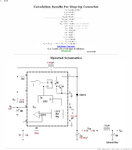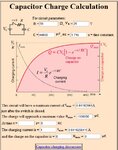whitecollar
Junior Member level 1
Hi guys,
I have breadboarded a simple boost converter based on an MC34063 IC. I'm using an external NPN transistor to switch a higher current than the 1.5 Amps the IC can handle.
Input 12v DC
Output 25v DC to charge a 44,000 uF capacitor bank through a 39 Ohm resistor.
The circuit works fine, however there is a audible falling whine that happens about mid way through the charge time of the 44,000 uF capacitor bank and continues to fall until it's a steady low whine and the capacitor is fully charged.
I thought the MC34063 was a constant frequency device? Can someone please explain to me what's causing the frequency to fall and become audible as the capacitor bank charges? I need to have a silent circuit.
The schematic is attached.
Many thanks!

I have breadboarded a simple boost converter based on an MC34063 IC. I'm using an external NPN transistor to switch a higher current than the 1.5 Amps the IC can handle.
Input 12v DC
Output 25v DC to charge a 44,000 uF capacitor bank through a 39 Ohm resistor.
The circuit works fine, however there is a audible falling whine that happens about mid way through the charge time of the 44,000 uF capacitor bank and continues to fall until it's a steady low whine and the capacitor is fully charged.
I thought the MC34063 was a constant frequency device? Can someone please explain to me what's causing the frequency to fall and become audible as the capacitor bank charges? I need to have a silent circuit.
The schematic is attached.
Many thanks!



